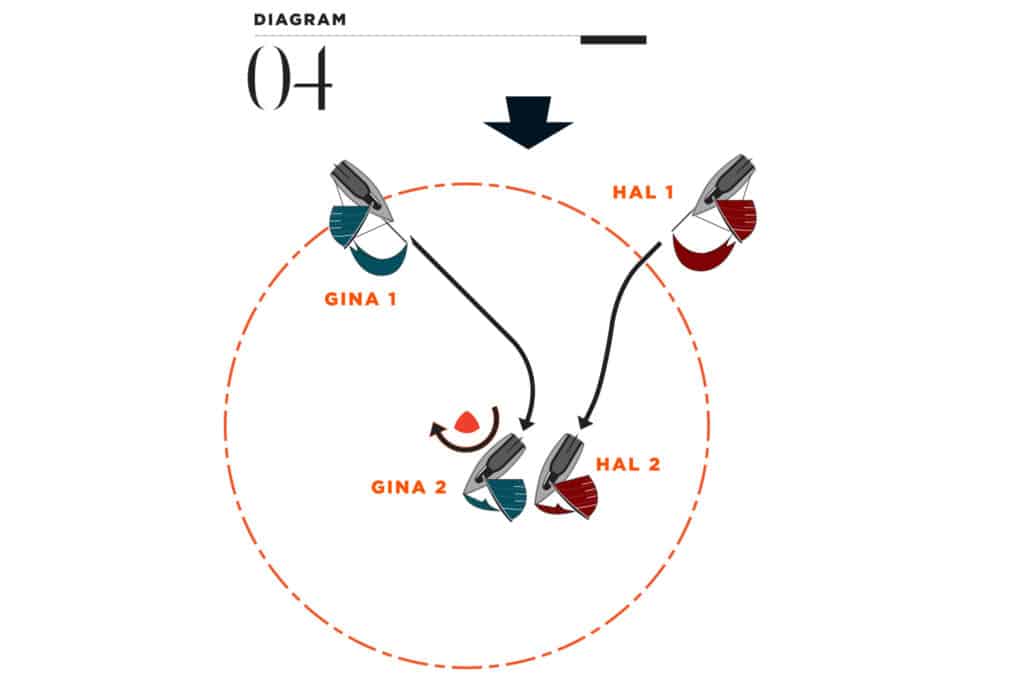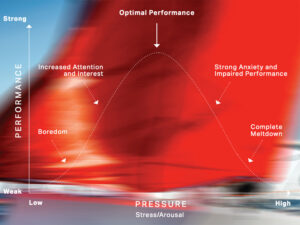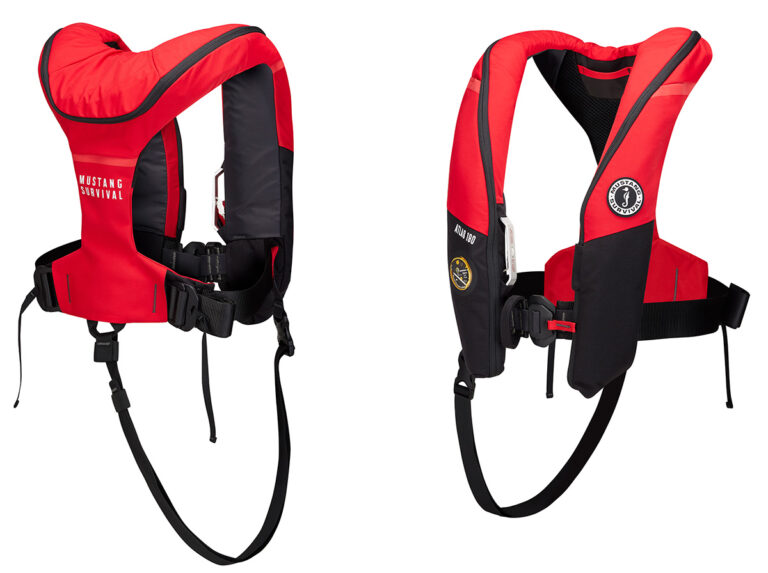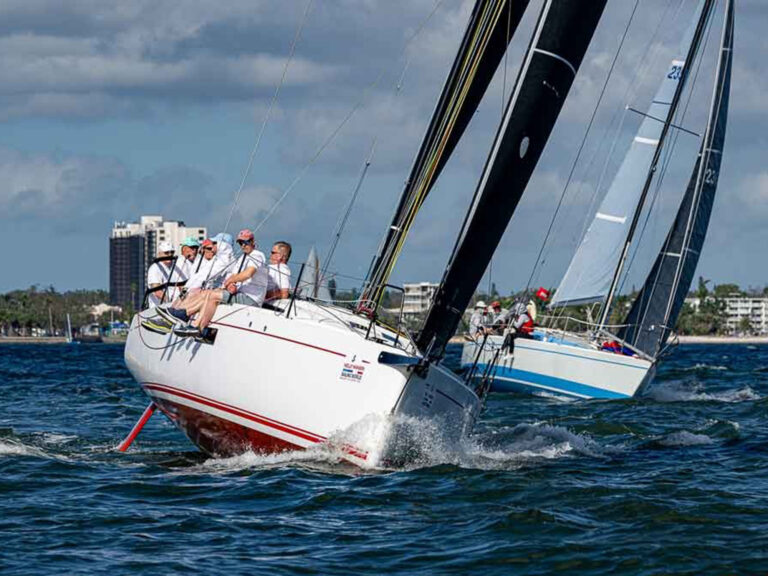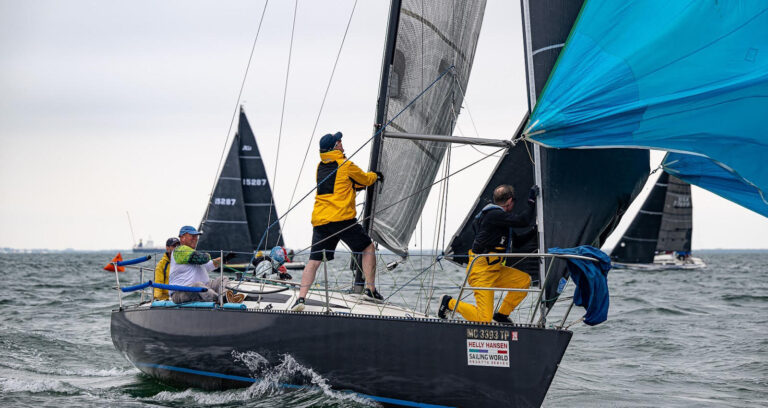Three parts of rule 18 require one boat to give another mark-room. They are Rules 18.2(b), 18.2(a), and 18.3(b). About 90 percent of the situations in which mark-room must be given are covered by Rule 18.2(b). Rule 18.2(b) applies between a pair of boats if one of two conditions is met: 1. They are overlapped when the first of them enters the zone; or 2. One of them is clear ahead when she enters the zone.
In the first article in this series, we discussed two common scenarios in which Rule 18.2(b)’s first sentence applied between two overlapped boats, and we continue with four more situations in which that same sentence applies. These four scenarios differ in that each illustrates a way in which a different set of other rules can apply along with Rule 18.2(b).
In the first diagram, Al and Beth are overlapped on starboard tack when the first of them reaches the zone at a windward mark that they are required to leave to port. As the leeward boat, Al has right of way under Rule 11, and as the inside boat, he is entitled to mark-room under Rule 18.2(b)’s first sentence. Both boats will need to luff up to head to wind and use their momentum to coast to a point at which they can bear off and leave the mark to port.
When Al luffs up to head to wind, he remains on starboard tack provided he does not turn past head to wind. When he luffs, and later when he bears off to round the mark, he may turn as rapidly as he wishes.
Normally a leeward boat that luffs or bears away rapidly is at risk of breaking Rule 16.1 by changing course without giving the windward boat room to keep clear. But in this example, Al luffs while taking room to sail to the mark. Because he sails within the mark-room to which is entitled under Rule 18.2(b), he will be exonerated under Rule 21(a) if he changes course so rapidly that he breaks Rule 16.1. This means that Beth must anticipate that Al may luff or bear away abruptly, and stay far enough away from him that she keeps clear of him as he changes course.
Beth is at risk of not being able to fetch the mark because she will have to remain head to wind to avoid contact with Al’s stern as it swings toward her when he bears off to round the mark. The extra time she must spend at head to wind means she could easily lose way, drift back, and be unable to make the mark on starboard tack.
To preserve his rights as he changes course, Al must be careful never to turn past head to wind. If he did, he would lose his entitlement to mark-room and his protection under Rule 21(a) (see Rule 18.2(c)’s last sentence).
In the second diagram, Dave and Carla are overlapped on port tack when the first of them reaches the zone at a windward mark that they are required to leave to port. As the windward boat, Dave must keep clear under Rule 11, but as the inside boat, he is entitled to mark-room under Rule 18.2(b)’s first sentence. Carla must give Dave space to sail in a seamanlike way to position 2 alongside the mark. Because Dave is overlapped inside and to windward of Carla at position 2, he is also entitled to room to tack around the mark, and his protection under Rule 21(a) allows him to luff up to head to wind as rapidly as he likes after position 2.
According to the definition Room, Carla must give Dave space to comply with his “obligations under the rules of Part 2 and Rule 31.” This means that Carla must give Dave enough space so that he can both avoid touching the mark and keep clear of her. Rule 18.2(c)’s last sentence implies that Dave loses his entitlement to mark-room when he turns past head to wind during his tack. However, his momentum will keep him well clear of Carla and prevent him from breaking Rule 13.
If Dave tacks in a seamanlike way and his starboard quarter hits Carla’s port side just after he turns past head to wind, that would be evidence that Carla broke Rule 18.2(b) by not giving Dave room to tack just before he turned past head to wind.
The third and fourth diagrams cover two similar incidents at a leeward mark that is one of the marks of a gate. The diagrams differ in one crucial respect—in the third diagram the mark is the port gate mark, while in the fourth diagram it is the starboard gate mark. In both diagrams, even though the boats are on opposite tacks they are overlapped when the first of them reaches the zone around the mark (see the last sentence of the definition Clear Astern and Clear Ahead; Overlap). In the third diagram Fran, the right-of-way boat on starboard tack, is overlapped inside Ed on port tack. In the fourth diagram Gina, the keep-clear boat on port tack, is overlapped inside Hal on starboard tack. Let’s first consider how the rules apply to Fran and Ed. Until the boats jibe, Fran is in hog heaven. She has right of way under Rule 10, she is entitled to mark-room under Rule 18.2(b), she may force Ed to jibe, and because the mark is a gate mark, Rule 18.4 does not apply. Therefore, she can carry Ed past the mark and jibe at any time she likes. After the boats jibe, if Fran is the windward boat, she loses right of way and will only be entitled to mark-room. However, if she is clear ahead of Ed after they jibe, then she retains both right of way and her entitlement to mark-room.
Now consider Gina and Hal. At position 1, they are in the same position relative to the mark that Fran and Ed were, but Gina and Hal will leave the mark to starboard whereas Fran and Ed left it to port. Gina on port tack is overlapped inside Hal on starboard. After she jibes, Gina will be the windward boat and Hal the leeward boat. Therefore, while Gina sails to the mark and rounds it, she must keep clear of Hal (first under Rule 10 and, after she jibes, under Rule 11), and Hal will be required to give her space to maneuver in a seamanlike way and to comply with Rules 10, 11, and 31. This means that Gina is entitled to mark-room, but she cannot force Hal to jibe, and she cannot delay her jibe once she is in a position to jibe around the mark. Hal can meet his obligation just by bearing off, as shown at position 2.
The diagram shows Gina entering the zone over a boatlength before Hal does, and so you might ask, “Why, since Gina is closer to the mark and ‘ahead’ of Hal, is Gina overlapped with Hal?” Take another look at the definition Clear Astern and Clear Ahead; Overlap. Before either Gina or Hal reaches the zone, they are both sailing more than 90 degrees to the true wind, and according the definition’s last sentence, the terms apply to them. According to the definition’s first two sentences, they overlap because neither is clear astern of the other. Even though Gina is “ahead” of Hal when she enters the zone, she is not clear ahead. This demonstrates why it is important to know the definitions of any term used in italics in a racing rule. The “rulebook” meaning for those terms is in the Definitions chapter. The meaning of a term in Definitions is frequently not the same meaning that the term has in everyday speech.
Another example of a term not being used in its everyday sense appeared in the discussion of the first diagram. When Al was on a head-to-wind course, neither his port nor his starboard side was “away from the wind.” However, he was considered to be on starboard tack because his starboard side was the side that was away from the wind before he luffed up to head to wind. According to the definitions Leeward and Windward, when a boat is head to wind, her leeward side is the side that “was away from the wind.”
Click here to read the other articles in the Mark-Room series.
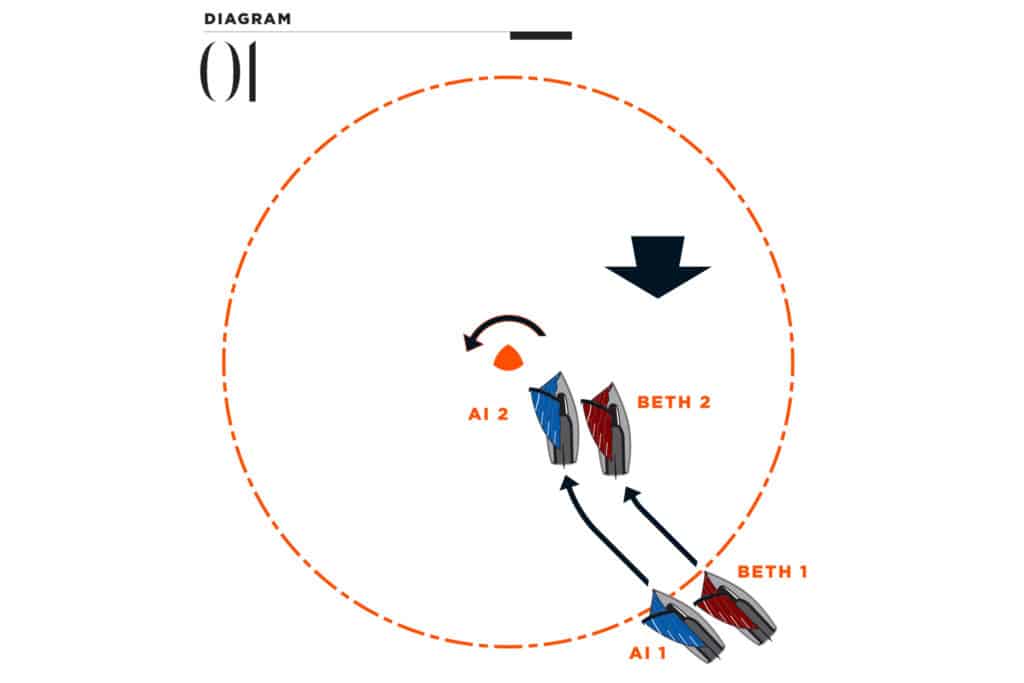
Overlapped at the Zone: Diagram 1
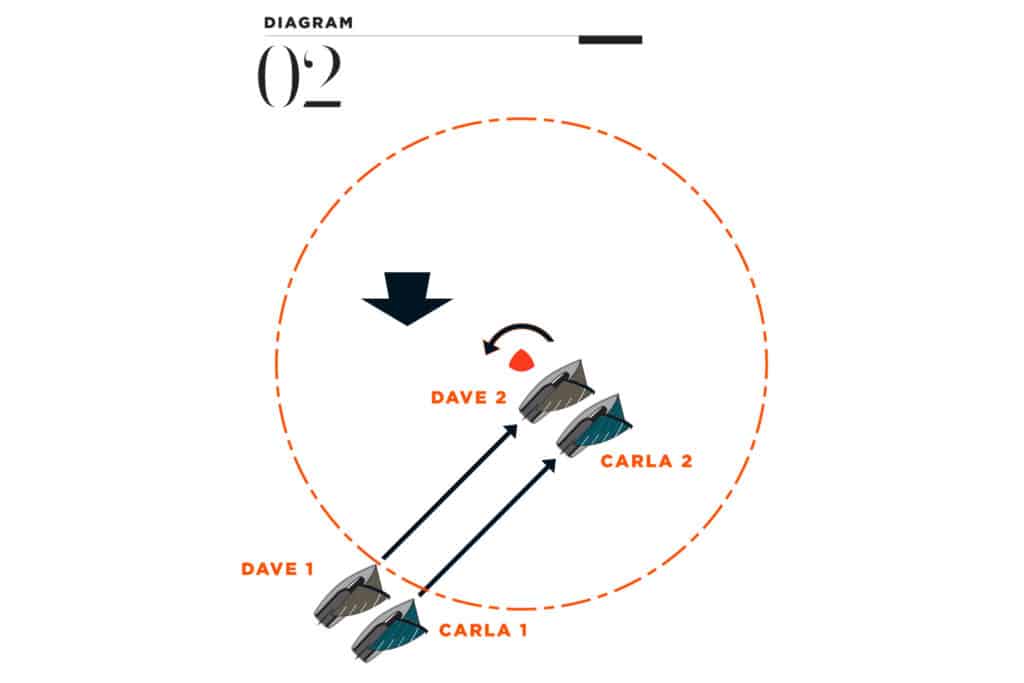
Overlapped at the Zone: Diagram 2
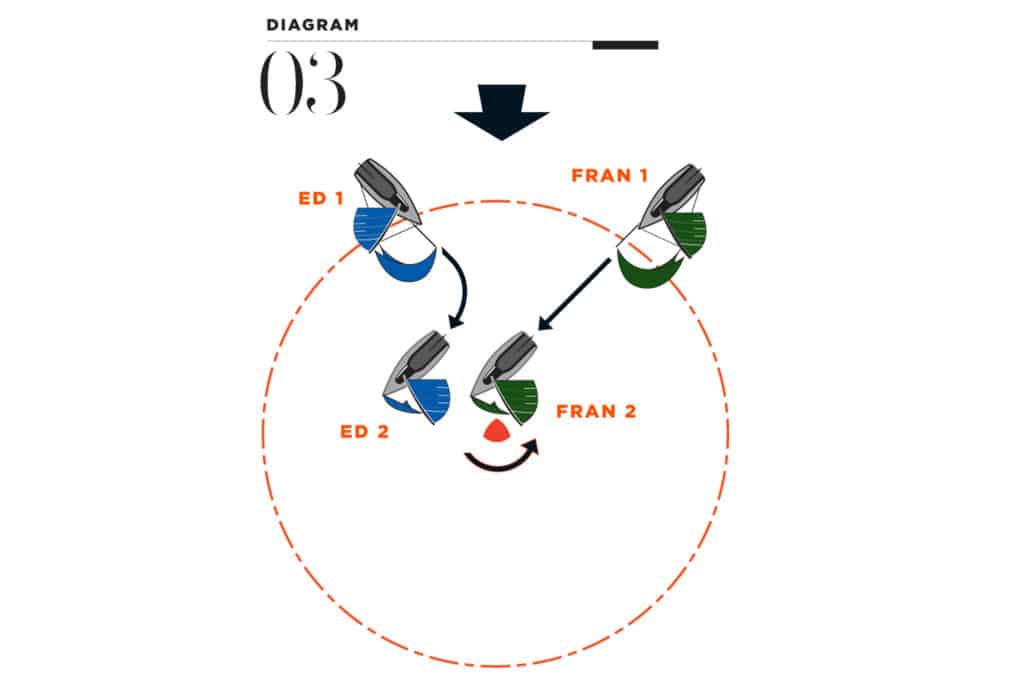
Overlapped at the Zone: Diagram 3
